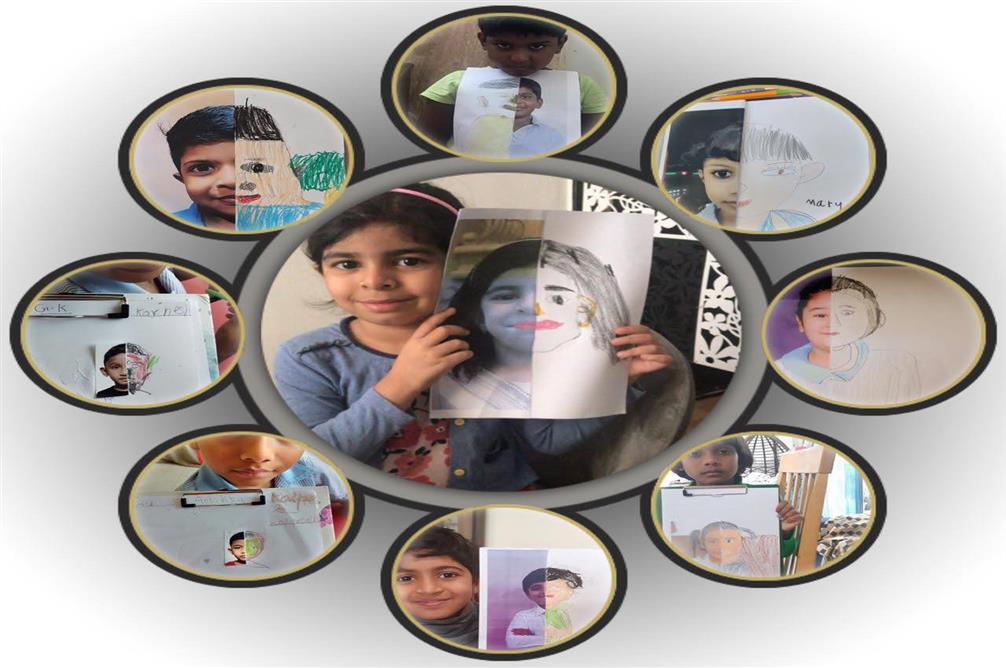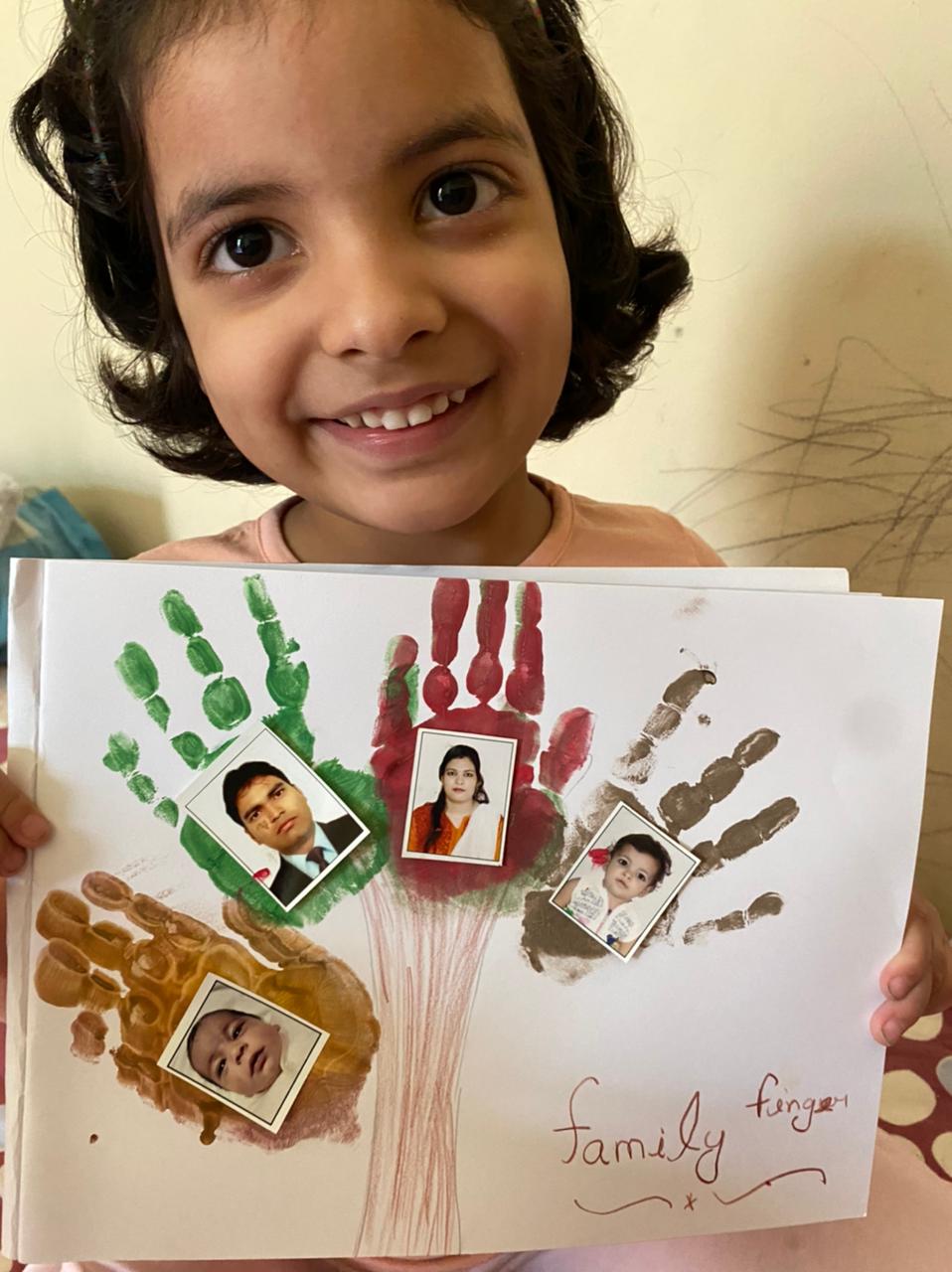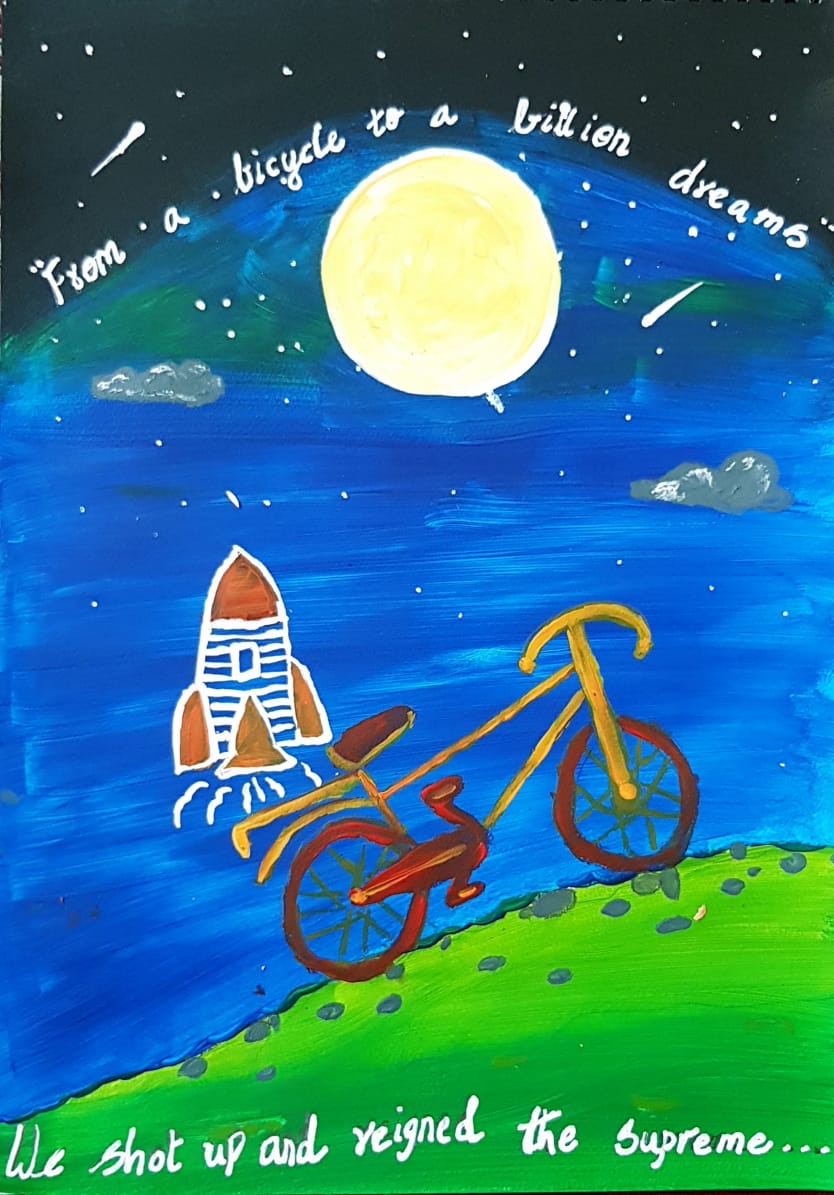
At GIIS we not only teach the elements of art and history of art but also to prepare our children for future skills. Our method of teaching art encourages them to be communicative, curious and problem solving. Teaching and learning art has three different perspectives
1) Learning history of art
2) Acquiring skills and techniques
3) Learning how to think or the process of metacognition- thinking of our own thinking.
Learning the history of art is a part of it. The purpose is not to teach specific art/craft styles, but rather to increase the child's awareness of art. While students are looking at art works from different eras, they are learning elements of art and principles of design in fun ways. Studies prove that art enhances a childs overall education. Art encourages cognitive, analytical and creative thinking skills. It strengthens physical coordination, and develops self-discipline. As children increase their awareness of art, they are more able to recognize, interpret and value the art they encounter in their everyday world. Now the question is why a child should learn about a certain artist ? We believe the important aspect is what is the take away after learning about Picasso, Van Gogh or Matisses work. The idea is to be influenced with enriched art not to get influenced and lose your own style and thought process.

It is true that the vision and mission of GIIS is to create global citizens but our school also gives emphasis on our traditions and identity. This is why art and culture plays a significant role here. We offer our students different cultural menus of art (Al a Cart) which they can pick and choose. They learn Gond painting to Aboriginal art, Madhubani to African art, Pop Art to impasto brush strokes . This lets them identify their own culture and have a culturally responsive view point while learning about different cultures. Being tolerant and respectful about other cultures , not judging someone by their nationality and passport should be the 21st century foremost skill which GIIS is focused into.
Another aspect of art is integrating with other core subjects that satisfies the needs of different learners. Interdisciplinary learning inspires an intrusive approach and reinforces incentive as well as helps learners to grow self-reliance by challenges, through both intellectual and hands-on activity. In short the aim is to connect students directly related to real-life experiences. Interdisciplinary and multi-context learning activities endorse and implement higher-order thinking skills. It also includes collaborative learning, action based research and problem-based learning. Although there are some subject specific skills (such as math/ science) but the importance of exchangeable skills are always applied across different areas of disciplines.
Interdisciplinary classroom method of GIIS is to allow students to grow through integrative cognitive processes. The idea of integration must contain a self-motivated, meaningful and constructive outlook through scientific processes. The principal operation of GIIS art education is to let the student experience the world and be able to act in a thoughtful , critical and metacognitive way.

A part of our metacognition and how we display our work as art and architecture of the space is an emotional experience for us, they are inseparable. Visual art is primarily about communication, just like language, but unlike language, where the rules and codes of meanings are culture and tradition specific, visual communication is always universal. What matters to us is the environment where our work expresses itself, for very often it is the same environment that gives it its meaning and beauty. The nature of an effective work should be communicative and able to naturally engage the viewer into reciprocation.
The display space always caters to all parents, visitors and students coming from different socio cultural backgrounds. We may have different values but all are driven through the philosophy of positivity a common thread between many uncommon individuals. At school although the displays are always planned by the educators but the students are constantly seeing the process and being a part of it . Students many times stop by in the corridor to see their works displayed and feel proud a sense of belonging works.
During the past one year GIIS is able to hold the same standard of teaching and learning art even online. Now the challenge is to experiment even further and be a more independent and responsible learner .







Comments ({{totalComments}})
{{comment.Comment}}